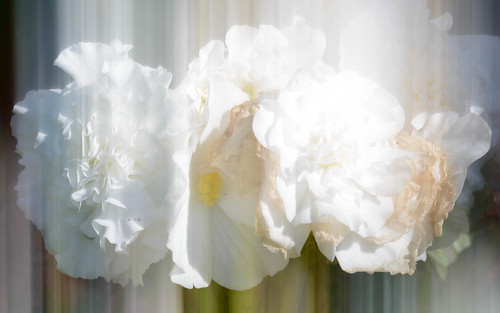What do you need as a prerequisite?
- Lights: They need to be dimmed down before hitting the sensor. So anything that helps you get down to a 1 sec exposure, like shooting in dusk/dawn, using an 8xND filter, or a lens that can stop down to f40 is helpful. As I was trying to shoot in bright sunlight I needed using an 8xND filter + stopping down to f40! Why the one second? Well, anything shorter makes it extremely hard to exert any kind of manual control over the movement of the camera. But you may well use longer exposure.
- Camera: You can use any camera. Just remember you probably need to mount a strong ND-filter to your lens and stop it down farther than f11. Plus, better make sure your sensor is clean, otherwise all the dust will be exposed when closing the lens to its minimum aperture.
- Action: Simply move your camera in any way during exposure. And be patient: The results vary quite a bit depending on what you do. So you need to experiment and get a feeling for which movements create which effect (e.g. angling the camera down vs. angling it up). Don't bother when you have to throw 95% of the shots away. Practice, practice, practice. With time you get a pretty good feeling for what works and what not.
- Tripod? Not necessarily! The set of images referred to above were shot free-hand. But for certain effects a tripod can be very helpful indeed. E.g. for rotating around the optical axis.
- B.t.w.: I prefer a bright subject with dark surroundings. When you move the camera you "paint" the photons of the brighter subject over the adjacent areas. If those areas are bright themselves you simply get a low-contrast mish-mash that doesn't look too attractive.

Btw.: Hiroshi Sugimoto answered his own question by shooting inside cinemas opening the shutter of his camera at the beginning of the film and closing it when the film ended. So in the end there was not much of the movie in his stills (but a white screen) but the movie theater was illuminated and produced a ghostly image of the interior. One of those images can be seen here. Read this wikipedia article to learn more about his work.